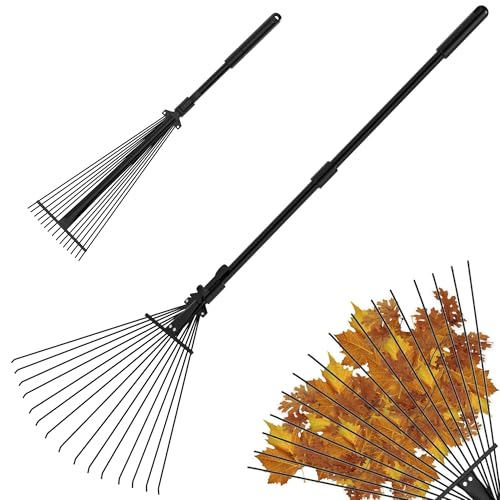Yes, a rake can be used for spreading gravel
Spreading gravel can be a time-consuming task, especially if you don’t have the right tools. While there are specialized tools available for spreading gravel, a rake can also be used for this purpose. In fact, using a rake can offer several advantages when it comes to spreading gravel efficiently and evenly. In this article, we will discuss why a rake can be a useful tool for spreading gravel and provide some tips on how to do it effectively.
Advantages of using a rake for spreading gravel
There are several advantages to using a rake for spreading gravel:
Cost-effective
A rake is a common gardening tool that most people already have in their shed. By using a rake for spreading gravel, you can save money on purchasing specialized gravel spreading tools. This makes it a cost-effective option for homeowners or DIY enthusiasts who are looking to spread gravel on a budget.
Versatility
Rakes come in various sizes and designs, making them versatile tools for different gardening tasks. While you can use a traditional garden rake for spreading gravel, you may also consider using a landscape rake, which is specifically designed for this purpose. Landscape rakes have wider and flatter heads, making them more efficient for spreading and leveling materials like gravel.
Even distribution
One of the key benefits of using a rake for spreading gravel is that it allows for more control over the distribution of the material. By raking the gravel, you can ensure an even spread, which is crucial for achieving a smooth and level surface. This is particularly important if you’re using the gravel for a driveway or walkway, as an uneven distribution can lead to an unstable and hazardous surface.
Easy to use
Using a rake for spreading gravel is relatively easy and straightforward. Simply scoop up the gravel with the rake and spread it evenly by dragging the rake across the surface. The long handle of the rake gives you a good reach, allowing you to cover larger areas with each stroke. This makes it a practical choice for spreading gravel, especially if you have a large area to cover.
Easy to maintain
Rakes are generally easy to maintain, requiring minimal cleaning and storage space. After using the rake to spread gravel, you can simply rinse it off with water to remove any residual material. Additionally, rakes are usually made of durable materials, such as steel or plastic, which can withstand regular use and exposure to outdoor elements.
Tips for using a rake to spread gravel effectively
To ensure that you get the best results when using a rake to spread gravel, here are some tips to keep in mind:
1. Choose the right rake: As mentioned earlier, a landscape rake is specifically designed for spreading and leveling materials like gravel. If possible, consider using a landscape rake for better efficiency and control.
2. Prepare the surface: Before spreading the gravel, make sure the surface is clean and free from debris. Remove any weeds, rocks, or other obstacles that may hinder the spread of the gravel.
3. Start from the edges: Begin spreading the gravel from the edges of the area and work your way towards the center. This will help ensure an even distribution and avoid the formation of lumps or uneven spots.
4. Use a back-and-forth motion: When raking the gravel, use a back-and-forth motion to evenly spread the material. This technique allows for better control and helps prevent the gravel from clumping together.
5. Check for levelness: As you spread the gravel, periodically check for levelness using a level or a straight board. This will help you identify any high or low spots that need to be adjusted.
In conclusion, a rake can be a useful tool for spreading gravel. It is cost-effective, versatile, and allows for more control over the distribution of the material. By following the tips mentioned above, you can effectively use a rake to spread gravel and achieve a smooth and level surface.






